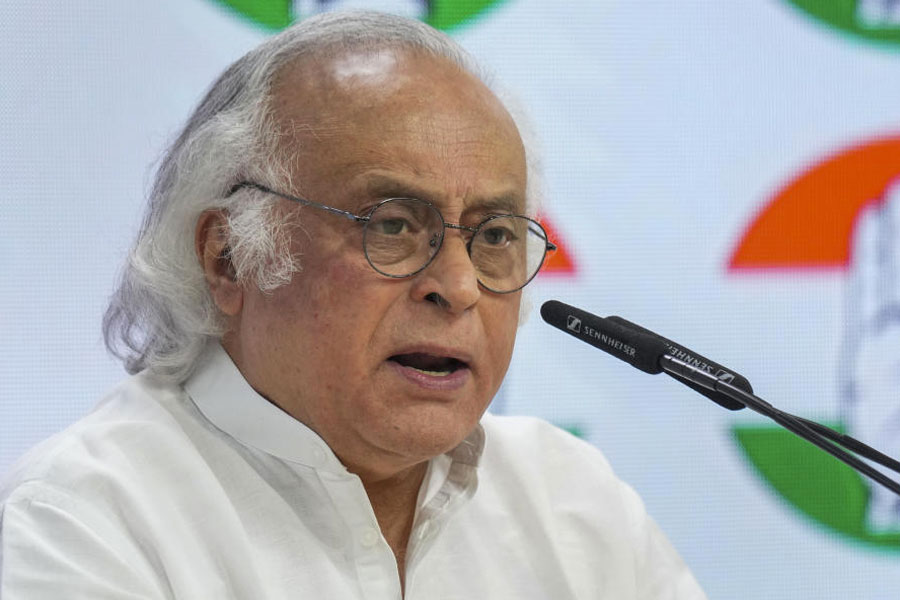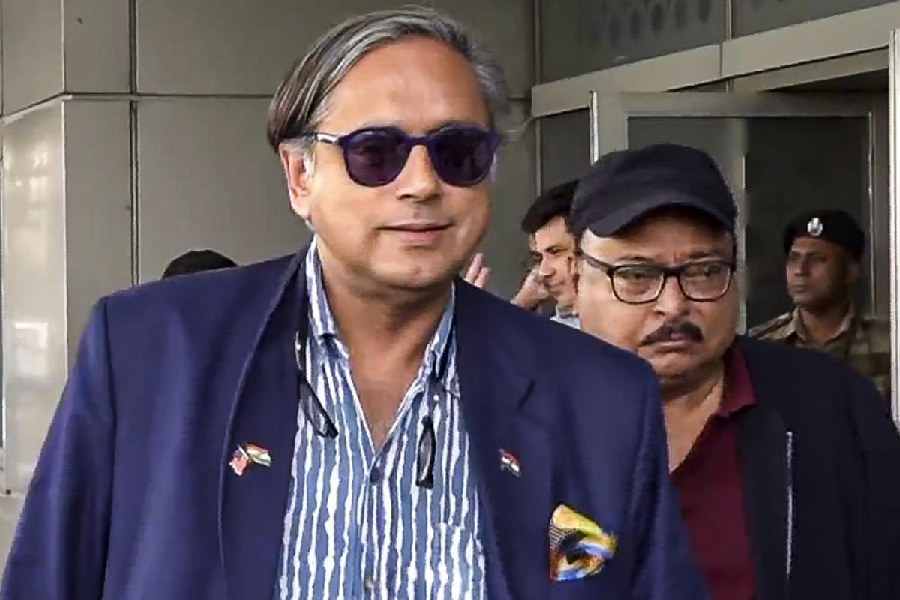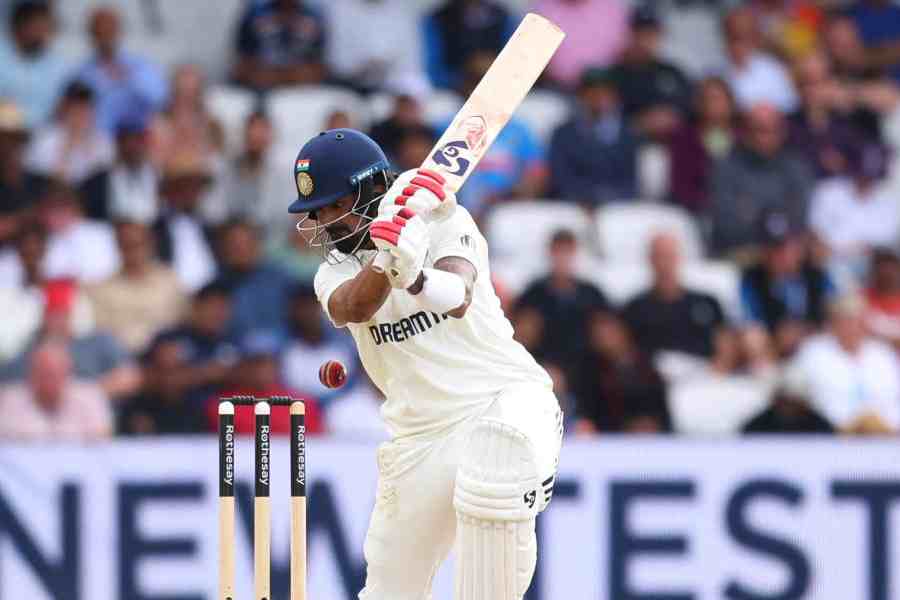 |
 |
| Jean-François Lesage designed a maroon and gold ‘bee cape’ (above) for the Hyatt Regency Chennai, which now has pride of place in the hotel’s lobby |
It’s an intricate empire controlled from a sprawling bungalow in Chennai. From here Jean-François Lesage sends out exquisitely embroidered home products to different corners of the world. The price tags at his Paris boutique start from 100 euros and there are lavish cushions, pillows, throws, and other haute home accessories that are all created in Chennai where Lesage lives.
French sensibilities mesh with Indian hand-work in his ‘bungalow workshop’ where Lesage directs some 200 artisans to create his delicate embroidery that’s feted the world over. Dressed in white, the master craftsmen work their threads through luxurious fabrics that are stretched on wooden addas (frames). “In France, nobody can embroider for palaces any more. Embroidery is a universal language and Indian artisans have the expertise to take on giant projects head-on,’’ says Lesage, the third generation embroiderer of the famous House of Lesage, Paris.
Lesage’s lineage is impeccable. His family has been closely associated with couture embroidery since the 1920s when his grandparents bought the embroidery studio of Albert Michonet, the embroiderer, to Napoleon III. His father, François Lesage, who died recently, was the legendary haute couture embroiderer loved by the top fashion signatures of Paris. In 2002, the Lesage family business, Maison Lesage, was bought by Chanel though François continued to run it till the end.
But Lesage chose not to follow in François’ footsteps and steered clear of embellishing extravagant gowns for fashion houses, and instead set up a workshop in Chennai for embroidering home furnishings.
Lesage’s Indian odyssey really began back in 1985 in a dingy neighbourhood in Varanasi. The youngster was on his first trip to India and suddenly found the whole district plunged in darkness. “The only bulb lit was in an embroidery workshop where a karigar was bent over his wooden frame, embroidering,” says Lesage, who was just 19 then.
The moment changed the course of his life. Till then, Lesage had no intention of joining his father’s couture embroidery business and was studying art auctioneering. He abandoned his plans and made a snap decision to move to India. “I fell in love with India and decided to turn embroiderer — though not in fashion but furnishings,” he says.
 |
 |
| The designer’s vision recreated the luxurious lifestyles of the nawabs in the Osmania Suite at The Park, Hyderabad; (above) Lesage and shoe designer Christian Louboutin collaborated on a line of limited edition high heels inspired by the French queen, Marie Antoinette |
He returned to India six years later in 1991, combed several cities in search of “the right embroidery partners” before finding them in Sriperumbudur, near Chennai. Here, he found embroiderers whose families had been involved in the craft for centuries and were very rooted to the art.
By 1993, Lesage’s embroidery workshop, Vastrakala, was set up in Chennai in collaboration with three associates. “Despite not being fluent in Tamil, there’s no embroidery that he cannot explain to his craftsmen,” says his associate Malavika Shivakumar. Their communication is mostly through gestures.
So, what inspires Lesage’s own work? Everything from children’s doodles to architecture. “I’m a very visual person — a midnight walk in Paris may reveal the play of shadows on a building’s facade that could influence my work,” he says.
The Frenchman also often collaborates on projects with world famous interior decorators including Peter Marino and Robert Couturier of the US and France’s Jacques Grange and Alberto Pinto. And though most of his clients are French, American or from the Middle East, his work finds its way all over the globe.
He prefers meeting his clients in person — either in Chennai or in Paris.
Today, Lesage has 12 designers, mostly Indian, working with him and designing patterns that are executed on everything from silk to woven horse hair. “We collaborate with Maison Lesage in Paris by embroidering pieces with techniques that are no longer used in France,” says Lesage.
Lesage was no newbie to the delicate world of embroidery when he set up shop in India. He had grown up watching his father François create intricately hand-embroidered pieces that required thousands of hours of work for fashion houses like Yves Saint Laurent, Chanel and Dior.
Lesage’s own repertoire is impressive. His work has included the restoration of one of Napoleon’s thrones (part of a private collection in Paris) and the king’s private chambers at the Château de Vaux-le-Vicomte near Paris. Another challenging project was the restoration of Monaco’s L’Opéra de Monte-Carlo in 2005 which he completed in eight weeks flat. Last year, he recreated the luxury of the nawabs for the Osmania Suite at The Park Hotel in Hyderabad, with its heavily embroidered bed, rugs and cushions.
 |
| Lesage’s embroidery workshop, Vastrakala, in Chennai has 200 master craftsmen and 12 designers |
And when curator Rajeev Sethi asked him to create a piece of art inspired by bees for the lobby of the Hyatt Regency Chennai, Lesage designed a ‘bee cape’ in red velvet with hundreds of bees embroidered with gold thread and metal wires.
Lesage has also flirted with fashion. Last year, he collaborated with top-notch shoe designer Christian Louboutin (of the stilettos with red soles fame) on his debut line for men. “Christian wanted to design something flamboyant for men,” says Lesage. The result was six new designs, like the opulent Mikaraja, a black patent leather number with beaded tassels and embroidery.
Earlier, in 2009, Lesage had worked with Louboutin on a limited-edition collection of 36 pairs of high heels inspired by Marie Antoinette. Seductive in satin, these featured embroidery, sequins and even an elaborately embroidered motif of the French queen on the ankle strap.
Lesage’s love affair with India will continue, he says firmly. On weekends he retires to his countryside house that’s two hours south of Chennai. “My garden is full of birds and I have eight dogs, a cockatoo, all kinds of chicken, fishes, tortoises — it’s a zoo out there,” he laughs. But it’s a home that he can’t wait to return to, even during his travels.










